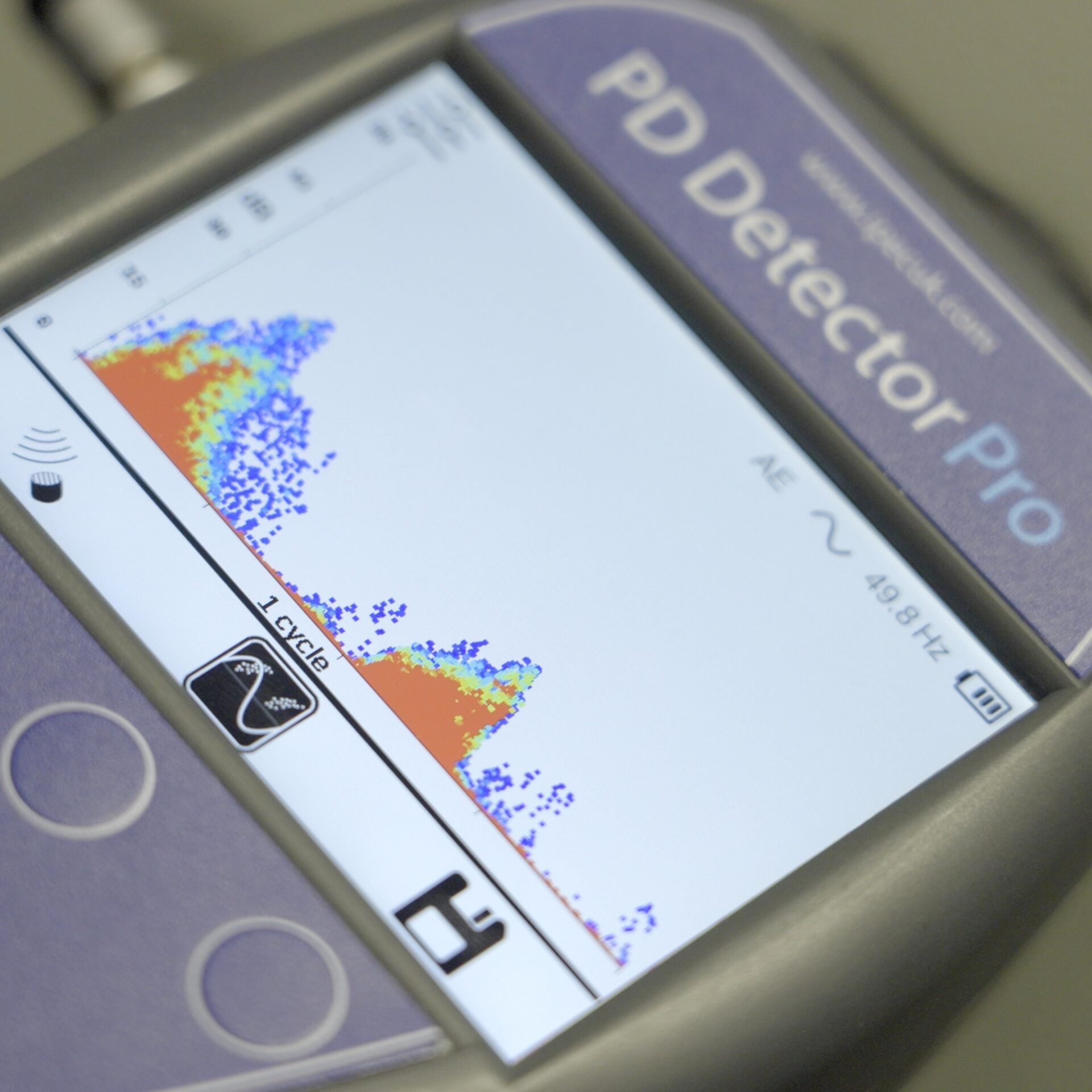
Olympic Park – Discharging RMUs
07 / 07 / 13
Summary
As part of a scheduled test program, IPEC carried out PD testing on all 170 RMU switches in the distribution network on the Olympic Park. The tests were carried out in the two months prior to the start of the London 2012 Games. Five RMUs, all Lucy Type VRN2A, were found to have high levels of partial discharge emanating from the rear of the switches, between the RMU and the transformer.
Investigation showed that the PD was coming from a broken monoblock, probably damaged during installation. All five RMUs were tested twice a day for the duration of the Games, as to check for any increase in the activity levels that would have warranted a shutdown.
The Olympic Park was purpose built for the London 2012 Olympic Games. 62km of new 11kV cable was laid and 170 RMU switches installed. In order to ensure maximum security of supply, on-line Partial Discharge testing was carried out on all of the cables and switchgear on the Park in the months before the Games.
![]()
Details
IPEC carried out a detailed PD survey of all 170 RMUs on the Olympic Park site, along with approximately 62km of connecting MV cables. The work was done to ensure the maximum possible reliability of the network during the London 2012 Olympic Games.
Five RMU switches were found to have PD activity. In each case, the magnitude of the PD was similar and appeared to be coming from the same part of the equipment. The PD magnitude recorded on each switch varied between 39dB and 43dB. There appeared to be little change in the activity with changing load or atmospheric conditions.
It was also noted that all the RMUs found with Partial Discharge activity were of a particular type and had been installed in a similar way, suggesting the cause of the problem may be common to all.
![]()
PD Investigation
Signal precedence testing was used to establish where on the switch the PD was coming from. It was discovered that the discharges were emanating from the horizontal coupling between the RMU itself and the transformer.
Operational requirements on site meant that a planned outage and investigation could not be carried out immediately, and so the five RMUs were spot tested twice a day until an opportunity arose for maintenance to be carried out.
The spot tests were carried out using the PD-SG1 portable test instrument; signalling the absolute PD level and including a Phase Resolved PD (PRPD) display that allows the user to distinguish PD from noise.
Maintenance
When the opportunity arose, maintenance was carried out. It was found that the bottom of the gasket between the RMU and transformer was discoloured with oil and when the two were separated, oil ran freely out of the monoblock- a component that should not have contained oil.
![]()
It was found once the RMU and Transformer were separated that the epoxy monoblock had broken during installation. The male connectors on one of the phases had been set too long, and when the two were bolted together the base of the monoblock had sheared off completely. This allowed oil from the transformer to leak into the coupling component.
![]()
Conclusions
The test programme successfully showed that there was no PD in any of the 62km of cable tested, and identified the 5 out of 170 RMUs that had a discharge problem. Through accurate PD source location and subsequent close monitoring, the issue was managed through a period when maintenance would have been difficult to carry out. When an opportunity arose to carry out a full investigation, the cause was found to be faulty equipment installation.




